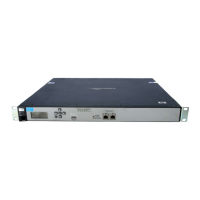Working with controlled APs
Discovery of controllers by controlled APs
6-9
The AP appends the default domain name returned by a DHCP server (when it assigns an IP
address to the AP) to the controller name. For example, if the DHCP server returns
mydomain.com, then the AP will search for the following controllers in this order:
cnsrv1.mydomain.com
cnsrv2.mydomain.com
cnsrv3.mydomain.com
cnsrv4.mydomain.com
cnsrv5.mydomain.com
Discovery using specific IP addresses
Provisioned APs can be configured to connect with a controller at a specific IP address. A list
of addresses can be defined, allowing the AP to search for multiple controllers.
This can also be used to strengthen the security on a local network to make sure that the AP
goes to a specific controller for management.
Discovery order
Discovery occurs differently for unprovisioned and provisioned APs.
Unprovisioned APs
Once an unprovisioned AP has received its IP address from a DHCP server, it attempts to
discover a controller using the following methods, in order:
UDP broadcast
DHCP
DNS
These discovery methods are applied on the following interfaces, in order:
Last interface on which a controller was discovered. (Only applies to APs that have
previously discovered a controller)
Untagged on the Port 1
All other detected VLANs (in sequence) on Port 1
Provisioned APs
If discovery settings are provisioned on the AP, then the AP uses only the provisioned settings
(see Provisioning discovery on page 6-37). The following discovery settings are available on
provisioned APs:
DNS discovery: Enables custom controller names and domains to be used for discovery.
Discovery using specific IP addresses: Enables the AP to find controllers operating at
specific IP addresses.

